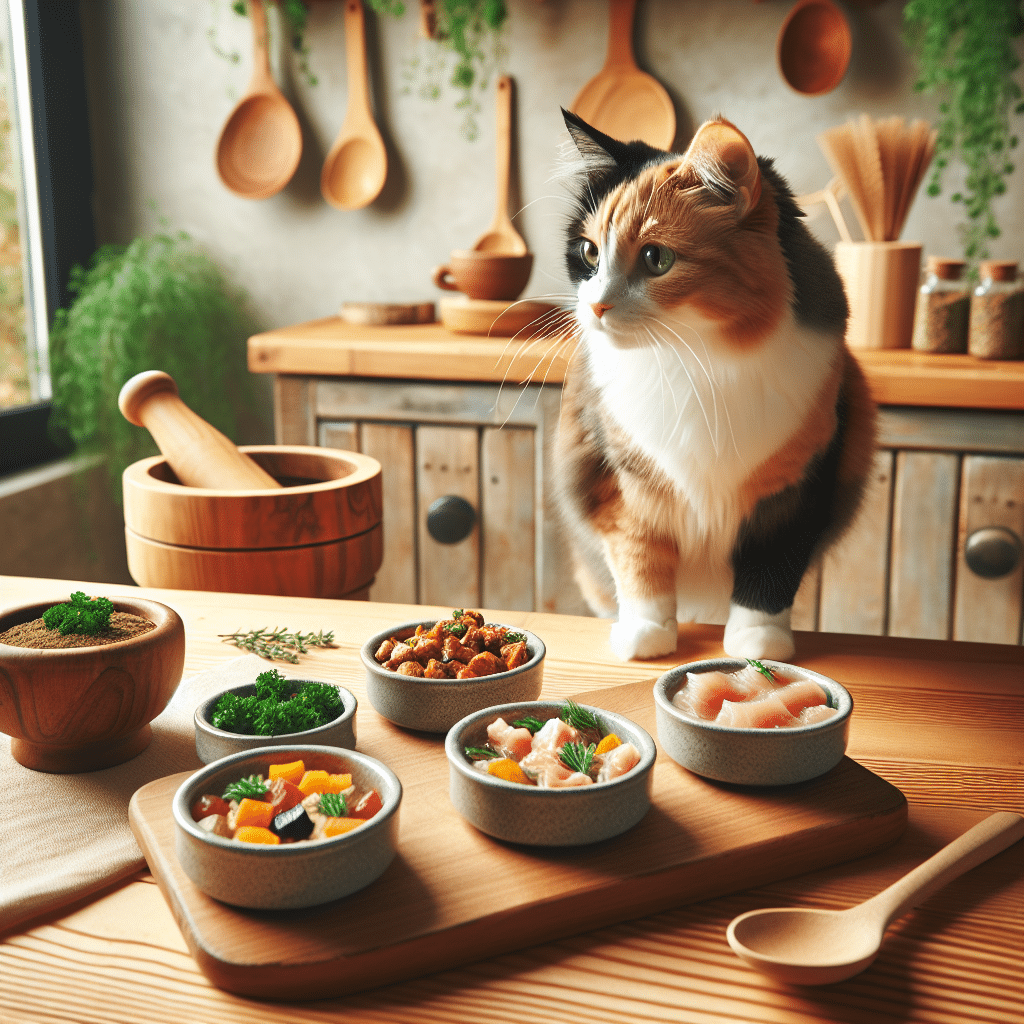Benefits of Homemade Organic Cat Food
When it comes to nourishing your feline friend, homemade organic cat food can offer several advantages. By preparing your cat’s meals at home, you have complete control over the ingredients, ensuring they are fresh, natural, and free from harmful additives. This method promotes a holistic approach to pet nutrition, leading to better health outcomes.
Additionally, homemade food can be particularly beneficial for cats with specific dietary restrictions or allergies. By formulating meals tailored to their individual needs, you can avoid using fillers or preservatives commonly found in commercial cat food. Organic ingredients are often richer in nutrients, which can translate into improved coat condition, increased energy levels, and overall better well-being.
Essential Nutritional Requirements
Cats are obligate carnivores, meaning they require a diet primarily consisting of animal-based proteins. To ensure your homemade cat food meets their nutritional needs, consider the following components:
-
Protein Sources: High-quality protein is vital. Options include chicken, turkey, rabbit, and fish. Each protein source should be organic and free-range, if possible, to maximize nutrient intake.
-
Fats: Essential fatty acids promote healthy skin and coat. Include fish oil or chicken fat for Omega-3 and Omega-6 fatty acids. These fats contribute to cognitive function and immune health.
-
Carbohydrates: While cats primarily require protein, small amounts of carbohydrates can be included. Pumpkin, sweet potatoes, and peas are excellent choices that provide fiber and additional nutrients.
-
Vitamins and Minerals: A homemade cat diet must include essential vitamins and minerals. Consider adding taurine (found in meat), calcium sources (such as crushed eggshells), and appropriate supplements. Consult a vet for tailored recommendations.
Wholesome Recipe Ideas
Here are some easy yet nutritious homemade recipes you can prepare for your feline friend. Each recipe uses organic ingredients to maximize health benefits.
Chicken and Pumpkin Delight
Ingredients:
- 1 cup organic chicken (cooked, shredded)
- 1/2 cup organic pumpkin puree
- 1/4 cup peas (cooked)
- 1 tsp fish oil
- 1/4 tsp taurine supplement (consult your vet for dosage)
Steps:
- Cook the chicken thoroughly, then shred it into small pieces.
- Combine the shredded chicken, pumpkin puree, and peas in a mixing bowl.
- Add fish oil and taurine, mixing well.
- Serve immediately or refrigerate for up to 3 days.
Fish and Sweet Potato Mash
Ingredients:
- 1 cup organic fish (salmon or tuna)
- 1/2 cup cooked sweet potato (mashed)
- 1/4 cup spinach (steamed and chopped)
- 1 tsp olive oil
- 1/4 tsp taurine supplement
Steps:
- Bake or steam the fish until cooked.
- In a bowl, mash the sweet potato, then mix in the chopped spinach.
- Flake the cooked fish into the mixture.
- Drizzle with olive oil and add taurine, stirring to combine.
- Serve fresh or store in the refrigerator for up to 3 days.
Beef and Vegetable Medley
Ingredients:
- 1 cup ground organic beef
- 1/2 cup mixed organic vegetables (carrots, broccoli, and zucchini)
- 1/4 cup brown rice (cooked)
- 1 tsp flaxseed oil
- 1/4 tsp taurine supplement
Steps:
- Brown the ground beef in a pan.
- Steam the mixed vegetables until soft.
- Combine the cooked beef, vegetables, and rice in a bowl.
- Drizzle with flaxseed oil and stir in the taurine.
- Serve warm or keep in the fridge for up to 3 days.
Portion Sizes and Serving Frequency
When transitioning to homemade diet options, portion sizes are crucial. Cats have different caloric needs based on their age, size, and energy levels. A general guideline is about 20 calories per pound of body weight for weight maintenance. For a 10-pound cat, this equals about 200 calories per day.
As a rule of thumb, meals can be divided into two or three servings per day. Monitor your cat’s weight and adjust portions based on their health and activity level. Keep in mind that certain cats might require more specialized feeding schedules or amounts if they are pregnant or recovering from illness.
Storage and Safety Tips
Storing homemade cat food properly ensures it stays safe and maintains its nutritional value.
-
Refrigeration: Store homemade meals in airtight containers in the fridge, using them within three days.
-
Freezing: For longer storage, meal prep can be frozen. Separate meals into portions, ensuring they are tightly sealed to prevent freezer burn. Use within one month for optimal freshness.
-
Thawing: Always thaw frozen food in the refrigerator, not at room temperature. Once thawed, consume within 24 hours and never refreeze meals once they’ve been thawed.
-
Hygiene: Maintain cleanliness in your preparation area. Wash hands, utensils, and surfaces thoroughly before and after handling raw ingredients.
Consulting Your Veterinarian
While creating homemade organic meals for your cat can be fulfilling and beneficial, it is essential to work closely with your veterinarian. They can guide you in formulating the right balance of nutrients and help you avoid common pitfalls, such as nutritional deficiencies or excessive calorie intake.
Regular check-ups with your vet are also critical for monitoring your cat’s health and adjusting their diet as needed. If your cat has specific medical issues—such as diabetes, kidney disease, or weight concerns—professional guidance is indispensable.
Final Considerations
Transitioning to homemade organic cat food can enhance your pet’s overall health and happiness, allowing you to tailor meals to their specific dietary needs. With control over what goes into each dish, you can create a diet that is both nutritious and delicious.
Embracing this approach requires research, planning, and dedication. By understanding the nutritional needs of your cat and engaging in proper meal preparation and storage practices, you can ensure that your beloved pet enjoys a healthier and happier life. As always, continued education and vigilance are key to maintaining your kitty’s well-being through homemade organic nutrition.
